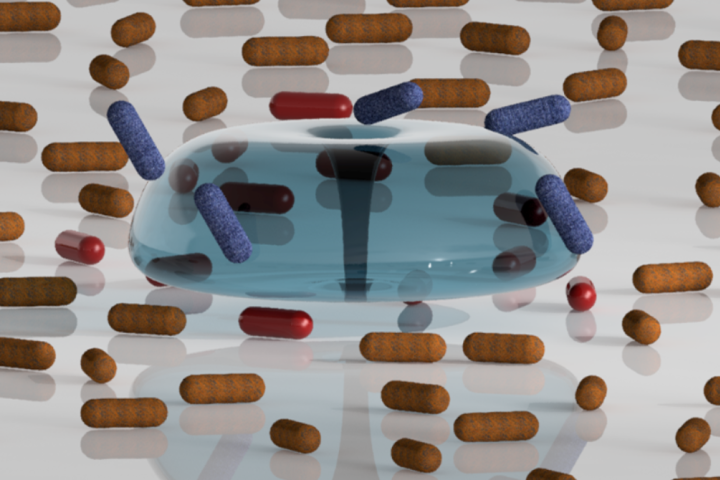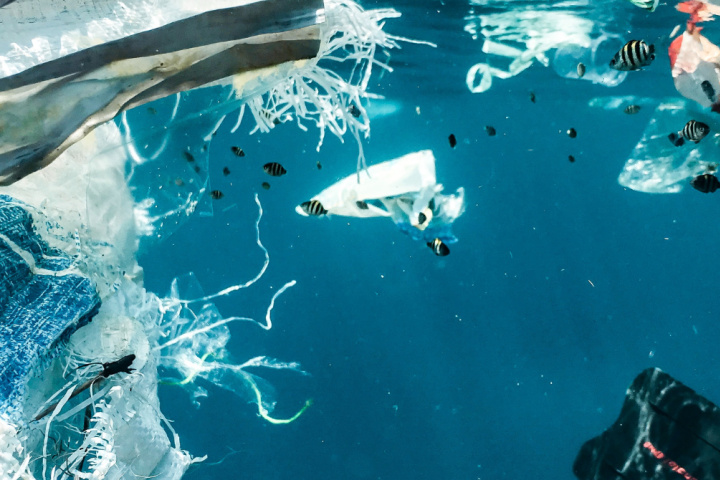News
Customize list
-

Harnessing the low temperatures of space to cool buildings and equipment in remote locations in an environmentally friendly way
Doc. dr. Professor Primož Poredoš, in collaboration with colleagues from the Laboratory for Environmental Technologies in Buildings at the Faculty of Mechanical Engineering, UL, and researchers from the ITEWA innovation team at Shanghai University, has developed a concentrator based on the AsymSkyCool method that enables cooling of buildings and appliances without the use of electricity. The concentrator takes advantage of the 'cold of space' – the extremely low temperatures of deep space, which can be as low as minus 15°C compared to the surrounding environment – and uses a special method to concentrate it and direct it towards a heat source. Using space as a cooling source enables environmentally friendly, efficient and sustainable cooling of devices that consume large amounts of electricity, such as LED lights, batteries and electric motors.
-

Campus Center project: a solution to the space problems of faculties and a better quality of life in the city centre
The University of Ljubljana presented the Campus Center project, in which students of the Faculty of Architecture of the University of Ljubljana, under the mentorship of Prof. Jurij Sadar, Asst. Prof. Ana Kreč and researcher Jure Hrovat, carried out a spatial survey of the existing buildings with the project task of placing the UL member programme in the existing buildings of the University on Aškerčeva Street after the relocation of the UL Faculty of Mechanical Engineering and the UL Faculty of Pharmacy to the new buildings.
-
Doc. dr. Jaka Tušek from UL FS recieves ERC funding to support his research on elastocaloric technology
Dr. Jaka Tušek, Assistant Professor at the University of Ljubljana’s Faculty of Mechanical Engineering (UL FS), and his research team are developing elastocaloric cooling and heating technology. The ground-breaking research carried out under the ERC Starting Grant (StG) as part of the SUPERCOOL project has been rewarded with a successful application for an ERC Proof-of-Concept (PoC) Grant with the E-CO-HEAT project, providing support for the innovation potential of research achievements. This makes Tušek the sixth ERC researcher in Slovenia, and the second at UL FS, to receive additional support to develop the innovative potential of his research. The E-CO-HEAT project will be based on the elastocaloric device developed in the SUPERCOOL project, which was the first in the world to demonstrate sustained dynamic performance and record-breaking cooling and heating characteristics, and whose specific characteristics exceed all caloric cooling devices built to date. The ERC PoC funding will enable the technology to be further developed and, together with the relevant business strategy and intellectual property, to be transferred into everyday use.
-

3D Printing of Piezoelectric Sensors Unaffected by Electromagnetic Interference
Researchers from the University of Ljubljana have developed a unique method for printing advanced sensors that are not affected by electromagnetic interference. The 3D printing of sensors allows for their rapid and adaptable integration into other 3D printed structures, even in hard-to-reach places, which is particularly important in medicine, such as in customized prosthetics. At the same time, these sensors can be used to monitor the lifespan of other 3D printed structures, such as parts for the automotive industry.
-

The thin line of sheet metal forming
The production of thin-walled components from sheet metal is an integral part of the automotive, aerospace and other industries. Forming the initial sheet metal into the desired final shape of the product requires overcoming reaction forces and thinning of the sheet metal, which can lead to fractures. Knowing the influence of many parameters of the forming process allows controlled change of the shape of the workpiece, thus achieving the target shape of the final component.
-

Treating wastewater through cavitation and understanding the effects of bubbles on bacterial cells
Increasing environmental pollution and drinking water shortages are a growing socioeconomic problem, in which cavitation technology can contribute to a cleaner and greener approach to wastewater treatment. Cavitation is a physical phenomenon that describes the phase change from liquid to vapour and back at constant temperature. The mechanical, thermal and chemical effects of cavitation can be utilised for various purposes, including to inactivate microorganisms in drinking water and wastewater. It has been proven that cells are subjected to damage in the immediate vicinity of a bubble. Further numerical analysis has identified the formation of microjets as a possible mechanism of bacterial cell damage.
-

Hydrodynamic cavitation can be used to inactivate enveloped viruses
Researchers from the Faculty of Mechanical Engineering at the University of Ljubljana, led by Prof. Dr. Matevž Dular, have shown in an experimental study that the phi6 virus, which belongs to the viruses with a lipid envelope, can be successfully inactivated using hydrodynamic cavitation. The study is significant in that it shows that hydrodynamic cavitation has the potential to inactivate pathogenic enveloped viruses in water under ambient conditions. Although the primary mode of transmission for enveloped viruses is not water, the recent pandemic has reminded us that we need to be prepared for the worst, given the possibility of the emergence of enveloped viruses or virus strains that can be transmitted through water in the future.
-

Using cavitation to break down invisible water pollutants
Researchers from the Faculty of Mechanical Engineering and the National Institute of Chemistry conducted an experimental study in which they achieved the degradation of a water-soluble synthetic polymer - poly(vinyl alcohol) PVOH - by acoustic and hydrodynamic cavitation. The use of PVOH is rapidly increasing, and as a result, increasing amounts of this material are being released into the environment. PVOH is widely used in the textile and paper industries, as well as in households, for example in the form of detergent pods. It is estimated that thousands of tons of it are washed into the aquatic ecosystem every year.
-

The innovative solutions for the use of flexibility in the power system
The increasing share of renewable distributed energy resources (DERs) in the power system is becoming a key for the decarbonization of the European energy sector and thus achieving the EU's energy and climate change policy objectives. The variability and uncertainty of the DERs generation present significant risks and challenges related to the stability and reliability of the entire interconnected European power system, as well as national and even small local networks while opening new opportunities for the development of new energy concepts and solutions.
-

Shocking in the field of pressure metrology
Accurate measurements of time-varying pressure are important to many industrial sectors. The most stringent requirements for accurate high-frequency pressure measurements come from the automotive, aerospace and ballistics industries, where pressure with frequencies up to few hundred kHz must be accurately measured. To provide dynamic calibrations of pressure meters in the required frequency range and therefore enable accurate measurements in the most demanding industries, many national metrology institutes worldwide are developing a primary dynamic measurement standard for pressure based on the shock tube. In the shock tube, the calibrated pressure meter can be excited by an almost ideal pressure step change generated by the reflection of the shock wave from the end wall of the shock tube. Such an extremely rapid reflection of the shock wave, in addition to generating the high-frequency pressure, inevitably also excites unwanted mechanical vibrations, which can produce spurious output signals of the pressure meter being calibrated.
-

Inductive response of phase separating battery materials
Understanding the processes in batteries is crucial for their proper design, control, management and analysis of the state of charge, health and safety. Physical sensors are a very important support for the advanced development and operation of batteries, and their combination with virtual models enables the exploitation of multiplicative effects, as mechanistically based models reveal a deeper insight into the phenomenology of the processes and enable their in-depth understanding.
-

Tribological Research on Surfaces and Contacts for Green Mobility
Mobility GT: The largest project at the faculty of mechanical engineering of UL so far – CoFund project of Horizon Europe was awarded the Seal of Excellence, with which Prof. Mitjan Kalin, PhD, who will coordinate a project of 24 postdoctoral research projects worth 7.6 million euros.
-

New method for structural health monitoring and failure
Lightweight structures such as wind turbines and aircraft are exposed to high dynamic loads during operation. Due to these operating conditions and their low mass, they vibrate. This is comparable to musical instruments, which produce sounds due to induced vibrations.
